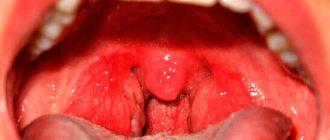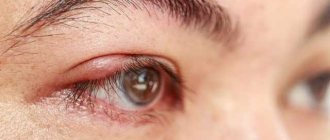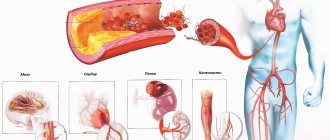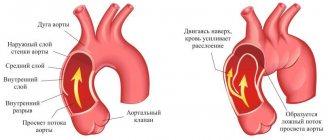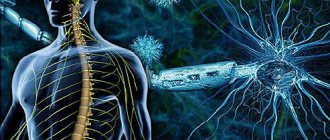The expansion and modification of a vessel of the circulatory system in any area is called an aneurysm. At the site of pathology, the walls of the vessel become thinner and weakened, so an aneurysm can rupture at any time. The danger is severe internal bleeding or hemorrhage into a vital organ. Ruptures of the abdominal aorta and cerebral vessels are considered especially dangerous. Such diseases, as a rule, cause disability and often lead to death. In addition, the site of pathology in the aorta is an area in which blood clots often form, which, if they break away from the wall, can cause a heart attack and stroke in a person.
Classification of pathology
Experts classify the disease according to various parameters:
- Size. The diameter of the formation is less than 3 mm – more than 25 mm.
- Form. Seals may be lateral, fusiform, or saccular. • lateral – located on the walls of the vessel itself; • fusiform – formed as a consequence of the process of expansion of the wall itself; • saccular or “berry” - are a small sac filled with blood, attached to one of the arteries that supplies the brain. This option is the most common and generally the size is no more than 10 mm.
- Number of cameras. Formations are divided into single-chamber or multi-chamber.
- By location. It can occur on one or two different vessels, be localized inside the carotid, on the anterior or middle cerebral artery, or occur on the vertebrobasilar system.
Arteriovenous aneurysm
This type of aneurysm is caused by dilation of the cerebral vessels and the formation of a kind of tangle. This pathology consists in the interweaving of different types of vessels. Veins and arteries have different blood pressure, venous is an order of magnitude weaker, so arterial blood flows from the vein with force, thereby expanding and deforming its walls.
Aneurysm of the vein of Galen
This type of aneurysm is quite rare, but children are most often susceptible to the development of this particular pathology in the brain. Boys are susceptible to vein of Galen aneurysm 2 times more often than girls. The disease is often fatal. Diagnosis is complicated by the absence of symptoms in children; heart failure or the development of hydrocephalus is quite rare.
Saccular aneurysm
This disease got its name due to the external similarity of the seal to the pouch. It is attached by the neck to the area where the vessels branch and grows to a size of no more than 1 cm. Pathological compaction is conventionally divided into the neck, body and bottom. This type is one of the most common diseases; as a rule, it forms at the base of the organ. Adults are often more prone to developing this type of pathology.
Causes of cerebral aneurysm
While no one can accurately answer the question about the source of development of cerebral aneurysms, opinions differ, and the exact theory has not yet been determined. However, most of them agree that certain factors can provoke this disease with a high degree of probability.
- Heredity. One of the most common and most accurate causes is congenital pathology, a change in the muscle layer of the cerebral arteries.
- A lack of collagen, essential for healthy vascular elasticity, can be a major factor.
- Oncological diseases.
- Vascular pathologies of various types.
- Drug addiction.
- Active and passive smoking.
Genetic failure
In case of congenital or acquired aneurysm, the decisive factor is the genetic predisposition of the human body. Collagen deficiency and various changes in the synthesis of connective fibers provoke the formation of defects, reduce resistance and stability when mechanical stress occurs.
Hypertension
Arterial hypertension is a chronic disease; its development can be triggered by various causes and factors. The leading factors provoking hypertension include constant increased blood flow pressure in the arteries, indicators of more than 140 to 90.
High blood pressure does not pose a particular danger to a healthy human body; nature provides compensation for this phenomenon by certain physiological mechanisms, however, persistent indicators and the lack of necessary treatment provoke a number of changes in the organs. The walls of blood vessels are subject to prolonged stress, and in this case, genetic predisposition or injury will play a negative role in the development of an aneurysm.
In the case of arterial hypertension, it is worth noting that the disease is often accompanied by atherosclerosis. In this scenario, the patient’s chances of developing a myocardial infarction or stroke increase.
Infections
The presence of various infections in the human body can also trigger the disease. This phenomenon is caused by the inflammatory process in places where infectious foci accumulate, the properties of the walls of blood vessels change, damage is formed, and the permeability of the walls by bacteria and substances that spread inflammation increases. The elasticity and strength of the membranes decreases significantly, and the risk of protrusion of the vascular intima increases.
The most common types include: various fungal infectious diseases, meningitis.
Traumatic brain injuries
Getting injured provokes the development of pathology. This process is caused by the contact of the human brain with part of the falciform process of the dura mater. Severe skull injuries form dissecting aneurysms. This type is distinguished by the fact that the protrusion does not occur through 2 other membranes, but bleeding occurs between them. As a result, a certain cavity appears, which over time contributes to the delamination of these shells. This process causes ruptures and bleeding, and over time the area reduces the lumen of blood vessels and provides incomplete blood supply to some parts of the brain. As the cavity enlarges, compression of the nerves occurs, which causes discomfort and concomitant diseases of varying severity. It is worth noting that the risk of blood clots increases with a traumatic brain injury.
What is the danger?
Danger with this disease can await the patient from any side.
Consequences of an aneurysm as such
Severe consequences associated with the natural course of the disease often occur. Increased intracranial pressure results from the accumulation of cerebrospinal fluid, cerebral edema, and increased bleeding from the aneurysm.
Impairment of consciousness develops up to its loss. Spasms (narrowing) of the arteries of the brain, caused by the reaction of the vascular wall to bleeding, can lead to a stroke, and most often occur within 4-15 days after the hemorrhage; repeated bleeding of the aneurysm worsens the condition.
Complications and consequences associated with diagnosis
In this case, allergic reactions may occur after the administration of contrast agents during CT or angiography, which are manifested by a rash, drop in blood pressure, breathing problems, hemorrhage and swelling at the site where the catheter was inserted in the groin during angiography.
Difficulties associated with treatment
May be observed:
- stroke in the area of the treated or nearby vessel;
- bleeding of the aneurysm during insertion of the coil;
- formation of a false aneurysm at the injection site in the groin;
- allergies when a contrast agent is administered;
- complications after anesthesia (heart attack or stroke).
The prognosis after surgery is uncertain. Late complications may occur, such as re-bulging of blood vessels in their weakened walls. Any of these complications may require further surgery. The 5-year survival rate of patients who survive an aneurysm is 60% of cases.
Symptoms of the disease
As a rule, signs of a cerebral aneurysm occurring in small volumes disappear without the manifestation of any symptoms forcing the patient to go to the doctor for a consultation. However, as the formations increase, the symptoms will definitely appear in various forms. Small and medium-sized formations will not cause discomfort or pressure on the vessels. Large aneurysms, regardless of their location, provoke various symptoms:
- discomfort and pain in the eyes;
- decreased quality of vision;
- swelling of facial tissues;
- significant hearing loss;
- enlarged pupil in one eye;
- paralysis of one part of the face, immobile state of muscles;
- frequent headaches;
- fainting;
- disturbances in swallowing function, sensation of a foreign body in the throat;
- spontaneous weakness in the legs;
- convulsions.
The first symptoms of cerebral vasodilation appear in the form of a headache; you should immediately pay attention to this and listen to your body.
Symptoms of cerebral aneurysms that appear immediately before rupture:
- a feeling of discomfort and strong pressure on the eyes when focusing on any object;
- excessive dizziness;
- extraneous sounds and noise waves in the ears;
- decreased speech function, slurred speech;
- general weakness of the whole body;
- decreased sensitivity.
Signs indicating hemorrhage:
- severe pain in the head that cannot be relieved by various medications;
- severe discomfort in the light and when noise occurs;
- paralysis and complete immobility of the limbs on one side of the body;
- a sharp change in the patient’s mental state, manifestations of restlessness and anxiety;
- impaired coordination of movements, loss of orientation in space;
- spontaneous urination;
- coma.
During hemorrhage of an aneurysm of the middle cerebral aorta, hemiparesis (more pronounced in the arm) or hemiplegia most often occurs, expressed in incomplete or complete paralysis of one part of the body.
In most cases, a person can live with the disease for many long and happy years without symptoms, however, when a rupture occurs, experts state death in 50% of cases, 25% of others remain disabled for life. Only 20-25% of those who have had this disease retain their ability to work. However, we should not forget that pathology can provoke complications from the consequences of a cerebral aneurysm.
Diagnosis of the disease
Diagnosis of a cerebral aneurysm should consist of a number of complex procedures that will help the neurosurgeon to accurately detect the lesion and recognize the course of the disease, as well as obtain a complete picture of the health of the whole organism, the presence of complications and pathologies. This procedure is also necessary when preparing a patient for surgery.
Basic research and diagnostic methods:
- ECG of the patient;
- MRI;
- blood analysis;
- medical examination by a specialist;
- collecting the patient's spinal fluid;
- angiography is a unique x-ray that allows you to see a complete picture of the patient’s brain condition and determine the location of the formation.
There are also a number of necessary procedures for the neurosurgeon to obtain a clear understanding of the patient’s health status:
- asking the patient about the presence of symptoms and other complaints;
- determining the timing of the onset of the disease;
- identification of concomitant pathologies;
- clarification of medications used by patients;
- presence of allergies to drugs;
- studying the family history of the disease to determine the patient’s predisposition.
In this case, a general and biochemical blood test is necessary to accurately determine the presence of other diseases and calculate the degree of risk in case of surgery.
How to prevent the development of the disease?
From a genetic perspective, there is little that can be done to prevent an aneurysm.
It is necessary to warn the doctor about the presence of the disease in the family, in order to carry out timely treatment and preventive measures aimed at maximizing the protection of the walls of blood vessels from adverse effects. It is mandatory to prevent atherosclerotic changes in the vascular walls. This fact is significantly influenced by smoking, so it should definitely be avoided.
In addition, high blood pressure should be mentioned, which can be associated in particular with a poor lifestyle and a lot of stress or insufficient exercise.
Obesity and high levels of lipids (fats) in the blood plasma are another potential “creator” of atherosclerosis. As a rule, preventing the deposition of fat in blood vessels requires general lifestyle changes, including diet and inclusion of a sufficient amount of exercise in daily life.
Treatment of cerebral aneurysm
For treatment it is necessary to resort to complex and radical measures. In case of timely intervention, the prognosis is very comforting, the disease can be controlled and not allowed to develop.
Surgery
The most radical method of treatment is surgery, but this option directly depends on the size and location of the formation. There are several main methods for this method:
- Intracranial. In this case, the specialist applies the necessary clip to the injured area, thereby removing the vessel from the blood supply system. The doctor aspirates excess blood and eliminates the developing hematomas. It is an open type and is considered the most complex operation.
- Intravascular surgery is performed using special equipment.
- Removal of altered areas followed by vascular prosthetics.
- Removal of part of the sphenoid bone, which forms the central part of the base of the skull.
Treatment of cerebral aneurysm through surgery is used only for severe cases of the disease.
Drug treatment
Treatment with various types of medications occurs strictly under the supervision of a doctor. This treatment is necessary to reduce symptoms and increase blood flow to the brain. As a rule, the doctor selects a set of drugs aimed at eliminating seizures and vomiting. An individual complex is selected that reduces external and internal swelling. Painkillers, calcium blockers and various types of antidepressants are mandatory.
Many clinics also resort to conservative methods of non-surgical treatment. An important point is the doctor’s round-the-clock monitoring of the patient’s condition; an individual approach and method are selected for each patient, based on various factors and indicators of his body.
Rupture of a cerebral aneurysm
A negative aspect of the occurrence of an aneurysm should also be the absence of symptoms in the early stages. The patient may not feel discomfort until the very moment of rupture of the vessel and subsequent hemorrhage. A fatal outcome in this case is almost inevitable; only a few have a chance of survival.
The rupture of a cerebral aneurysm entails negative consequences; the patient’s condition requires urgent hospitalization. The accompanying severe headache is caused by blood leaking onto the meninges, irritating the nerve endings.
Manifestation and consequences
An unruptured aneurysm can hide in a person throughout his life, or it can rupture in a person who is completely healthy at first glance. The consequences of the disease in most cases paint a negative picture of survival. In most cases, the disease provokes the formation of stroke, hydrocephalus and even coma, in severe conditions and irreversible brain damage.
When a rupture occurs, the patient also experiences partial paralysis of the limbs, a sharp deterioration in health, dizziness and vomiting.
In order to predict the patient's condition after the onset of pathology, it is necessary to take into account the age category of the patient, the state of health of the body as a whole, the location of the disease, the degree of hemorrhage and the time spent transporting the patient to a medical facility.
To achieve the most successful prognosis, you should consult a doctor as early as possible and receive qualified help and the necessary treatment.
The recovery period lasts individually for each patient, depending on the complexity of the disease.
Treatment methods
According to experts, surgery is the most effective method of treating an aneurysm in case of rupture. The doctor will perform clipping, strengthen the walls of blood vessels, and, if necessary, obstruct the patency with special miniature spirals.
After surgery, the patient is recommended to adhere to:
- bed rest;
- blood pressure control;
- taking a number of vasodilators and painkillers.
It should be noted that early diagnosis is the most effective method of preventing negative consequences, and the effectiveness of the operation directly depends on the skill and experience of the surgeon.
Causes of aneurysms
A defect in the vascular wall with the appearance of a protrusion can be congenital, although such an aneurysm can only be diagnosed in adolescence or even adulthood. In this case, a malformation is often detected - a violation of the development of the circulatory system with an incorrectly formed area of the transition of arterioles to venules. If there is a connective tissue pathology, cerebral aneurysms are often combined with congenital heart defects and great vessels, polycystic kidney disease, and systemic diseases. Therefore, the presence of multiple congenital pathologies requires special vigilance regarding vascular anomalies.
Aneurysm of the arterial wall can also be acquired. In this case, it appears during life due to the influence of various factors. These include:
- hypertension, especially with an uncontrolled crisis;
- atherosclerotic vascular damage with the development of dissecting plaques and subsequent thinning of the artery walls;
- external compression of blood vessels by various tumors;
- thrombosis and thromboembolism of the arteries, accompanied by expansion of the area of the vessel in front of the thrombus;
- brain injuries;
- exposure to radiation that changes the structure and elasticity of tissues;
- various infections affecting the brain, its membranes and blood vessels.
Chronic intoxications predispose to the appearance of cerebral aneurysms: smoking and drug use (especially cocaine).
